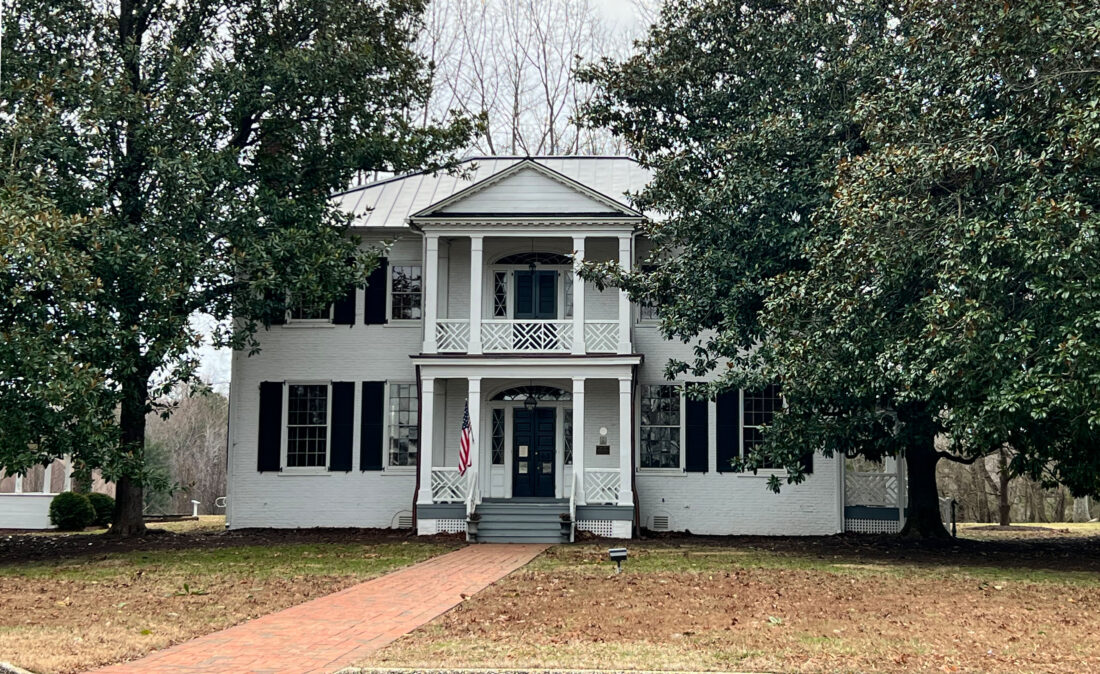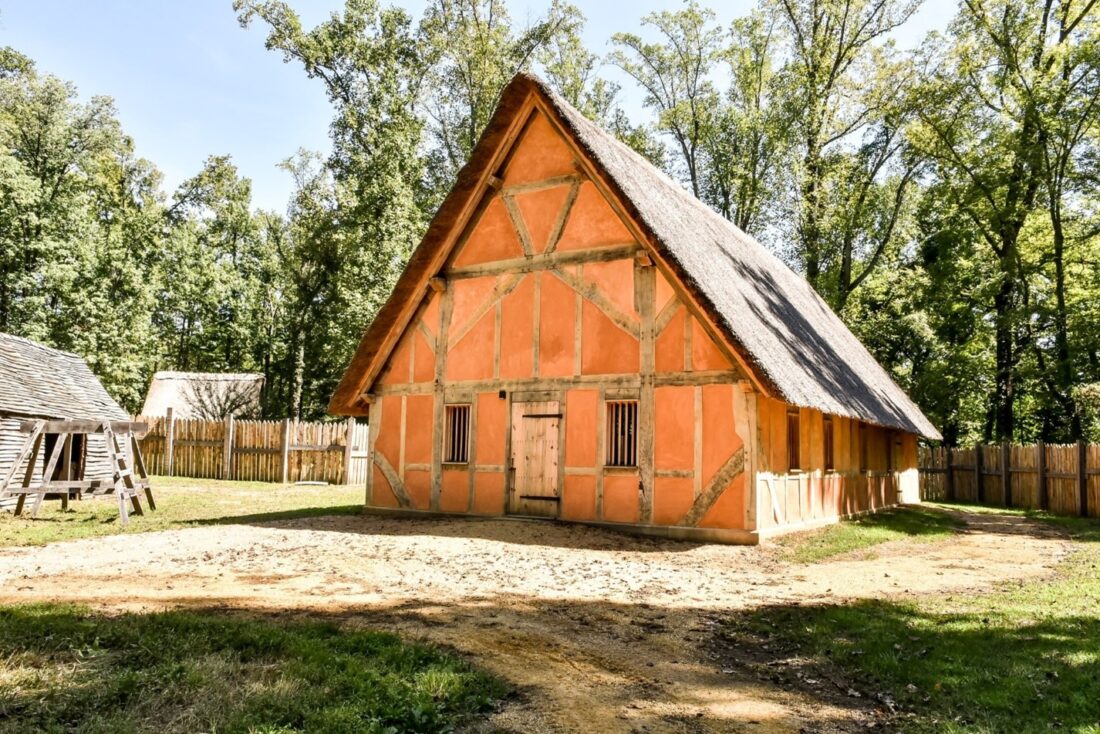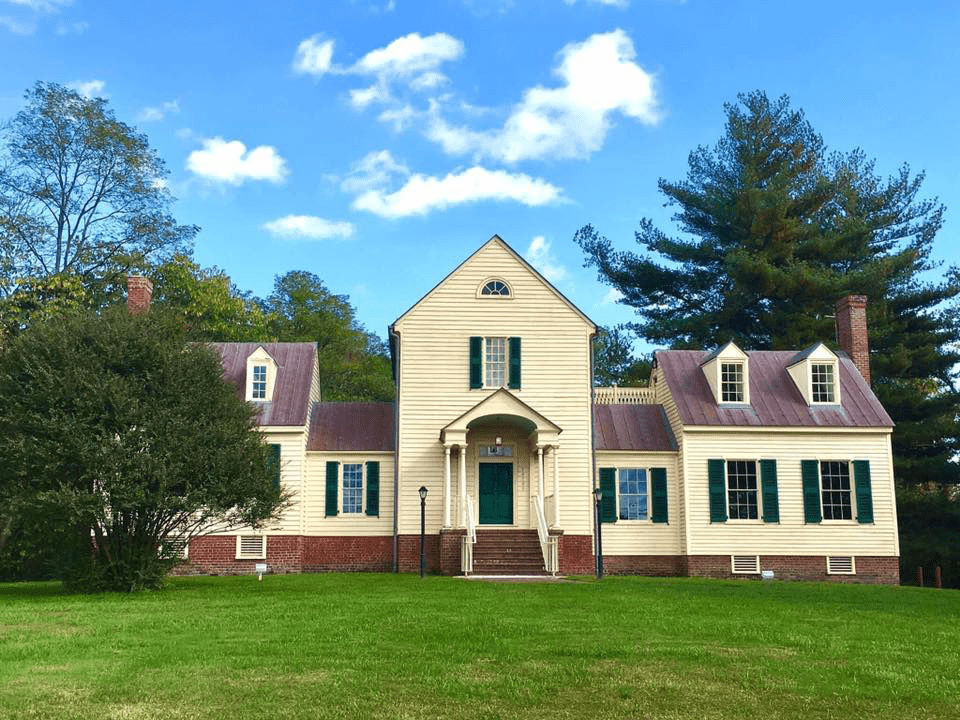
Chesterfield County traces its past to the Native Americans who lived here for thousands of years before the arrival of English settlers in 1611 to establish the second successful settlement in the New World. It is also the location of Revolutionary War engagements and major Civil War campaigns. Chesterfield is the home of many agricultural and industrial firsts, including the first commercial cultivation of tobacco, the first ironworks, and the first commercially-mined coal in North America. More than 18 historical sites managed by Parks and Recreation share the stories and bring the past to life through tours of early American homes (Castlewood, Magnolia Grange, Eppington), industrial ruins (Mid-Lothian Mines and Falling Creek Ironworks), and live reenactments (Henricus Historical Park).
Plan a trip to include these locations based on the period of history that interests you most.

Early American Settlement (1600s)
With a few hours to delve into the history of how American began, visit Henricus Historical Park, (check the website for hours and admission fees) site of the second permanent settlement in the country, founded by Sir Thomas Dale. Plan a few hours to immerse into the early settlers’ experience and the interaction with Native Americans including Pocahontas and the Powhatan tribe in the early 1600’s. Discover the world in which the Powhatan people lived and the homes and industry of Sir Thomas Dale’s English colonists from 1611-1622.
Visitors to Henricus Historical Park touch, smell, hear and see history in action. Interpreters work and live as laborers, farmers, and blacksmiths in this working, living, history village. Learn through the interpreters what life was like in the settlement and the influence the Powhatan natives had on the settlers.
Don’t miss the stunning view overlooking the James River from high above the waterline.

Industrialization (1700s)
Two parks with history around the industrialization of America are Mid-Lothian Mines Park and Falling Creek Ironworks Park. Walk the trail at these parks to see remnants of the industries and read historical markers about operations at that time.
Falling Creek Ironworks Park dates back to 1619, the first iron furnace. It was chartered by the Virginia company of London. The park is the site of the first American Ironworks, and the beginning of the iron and steel industry in the New World.
Mid-Lothian Mines Park tells the story of the earliest coal mining in America from 1701, when coal was first discovered, to the mid-1730s, when it began commercial production. The first commercially mined coal in America came from Midlothian, where it was discovered near the French Huguenot settlement on the James River around 1701. Coal from the mines here was used to fire the furnaces at Tredegar Iron Works in Richmond. Tredegar was the main supplier of artillery and iron for the Confederacy. The pleasant journey through the woods and around the lake are rewarded with sights of the Grove Shaft Ruins and the headstock structure by the lake.

Chesterfield County History (1800s)
Start at the elegant Federal period homes, Magnolia Grange House Museum and Castlewood (check websites for hours and admission fees) for a sense of life in the 1800’s. Then cross Iron Bridge Road to Trinity Church, the headquarters of the Chesterfield Historical Society of VA, and site of its genealogy and research library. Drive from Trinity Church to the Chesterfield Courthouse, in the center of the current Chesterfield Government complex. Wander the courthouse square to see the Chesterfield County Museum, the 1892 Jail, and the 1917 Courthouse. The courtyard is full of historical tributes including for the Revolutionary War, World War I, Civil War, and includes the historic bell that resides inside the Chesterfield County Museum that is older than the Liberty Bell!
Civil War (1800s)
Civil War Buffs will enjoy visiting Chesterfield’s Civil War historical places and battlefields, these locations with historical markers and earthworks still intact from battles between Union and Confederate troops.
- 39th Illinois Park
- Battery Dantzler Park
- Dodd Park at Point of Rocks
- Dutch Gap Conservation Area
- Fort Stevens Park
- Fort Wead Park
- Howlett Line Park
- Sergeant James Engle Park
- Ware Bottom Church Battlefield Park
Chesterfield has played a prominent role throughout American history, much of which can still be seen through the historic sites above.
For a comprehensive list of historic sites in Chesterfield, check out the list below.
Castlewood
10201 Iron Bridge Road, Chesterfield
This unique Federal style house was built in 1817 by county clerk Parke Poindexter and features a formal five-part layout that is unique among Virginia’s other recorded historic dwellings. The structure is a county and state Landmark.
Historic Trinity Church
10111 Iron Bridge Road, Chesterfield
The Chesterfield Historical Society of Virginia is based at historic Trinity Church, built in 1887 which contains its offices and library, and is a research facility for the history of the county and its families. The collection contains manuscript collections, rare books, a database of veterans, family history files, cemetery files, scrapbooks, maps and pictures. The public is welcome to use the library.
Chesterfield County Museum
6813 Mimms Loop, Chesterfield
The Chesterfield County Museum is a replica of the 1750 Courthouse and features a timeline of the county’s history, a reproduction of a general store and exhibits on Native American culture, early English settlements, the Revolutionary and Civil Wars, and the first iron and coal mines in North America in addition to a changing exhibit space.
Historic 1892 Jail
6819 Mimms Loop, Chesterfield
The 1892 Jail has the original iron barred cells, which held prisoners until 1962, and a changing exhibit space. A stroll through the museum complex enables visitors to see the 1917 courthouse, monuments to Baptist preachers and Confederate soldiers, and the Chesterfield County Veterans Memorial Wall and Fallen Officer marker.
Magnolia Grange House Museum
10020 Iron Bridge Road, Chesterfield
This Federal period plantation house was built in 1822 by William Winfree. It is listed on the county and state registers and is on the National Register of Historic Places. The house exhibits distinctive architecture, Zuber painted wallpaper and elaborate woodwork. The house interprets the lives of the Winfree, Duvall and Cogbill families.
Historic 1917 Courthouse
10011 Iron Bridge Road, Chesterfield
This elaborate Greek Revival style courthouse sits on the site where the first colonial courthouse was built in 1750. The structure is a county and state Landmark and is on the National Register of Historic Places.
Henricus Historical Park
251 Henricus Park Road, Chester
Henricus Historical Park is a re-creation of the second successful English settlement in the New World, established here in 1611. The park is an outdoor living-history museum where visitors interact through encounters with period-dressed historical interpreters of the English settlers and Virginia Indians. The site includes 14 re-created colonial structures including Mount Malady, the first hospital in the New World.
Eppington
14602 Eppes Fall Road, Chesterfield
The Eppes were major landowners in the mid-17th century, and Francis Eppes VI built Eppington around 1768 in a unique style featuring a hipped roof with flanking wings. Eppes was a horticulturalist and a very successful land manager. He and Thomas Jefferson married half-sisters, and Jefferson brought his daughters to Eppington after their mother’s death when he left to serve as minister to France. Eppington is available for tours by appointment and open annually on Eppington Heritage Day in October.
Falling Creek Ironworks
6407 Route 1, Richmond
Discover the site of the first iron furnace in the New World. Construction began in 1619, and the ironworks became operational in 1621 only to be destroyed during the Indian uprising of 1622. Several further attempts to rebuild made it operational in 1750, but it was destroyed by the British in 1781.
Mid-Lothian Mines Park
13286 N. Woolridge Road, Midlothian
This site marks the beginning of commercially mined coal in North America. Coal was discovered in Midlothian in 1701. Remains of the Grove Shaft are visible as well as a reproduction of a headstock. There is an amphitheater at the park, walking trails and interpretive signs.
Pleasant View School|
18431 River Road
Built in 1930, this is one of the last preserved African American school houses from the segregated era. The building exhibits many of the same architectural features as the Rosenwald Schools constructed in the deep South.
CIVIL WAR SITES
Battery Dantzler Park*
1820 Battery Dantzler Road
The Confederate gun position called Battery Dantzler was constructed in May 1864 and named in honor of Col. Olin Miller Dantzler, 22d South Carolina Infantry, who was killed in action just south of the park. It anchored the northern end of the Howlett Line.
Dutch Gap Canal at Henricus Historical Park*
301 Henricus Park Road
Using Gen. Butler’s plan, construction of a canal across Dutch Gap took place from August to December 1864. The majority of the work was done by African-American soldiers.
Fort Stevens Park*
8900 Pams Road
Fort Stevens was the main bastion of the Confederate lines, defending the southern approach to Richmond. In 1864, it became a pivotal point for a major counterattack that halted Butler’s advance. This was the largest battle of the Bermuda Hundred Campaign, involving more than 35,000 troops.
39th Illinois Park
8913 Proctors Run Court
Fort Wead and Sgt. Engle Park*
1107 Greyledge Boulevard
Fort Wead was built at the rear of the main Union lines to prevent Confederate forces from advancing if the main lines were captured. It was named after Col. Frederick Wead of the 98th New York. Sgt. Engle Park is named after Union Sgt. James E. Engle of the 97th Pennsylvania Volunteers.
Howlett Line Park
14100 Howlett Line Drive
This park is named for a line of Confederate earthworks that stretched for more than three miles from the James River to the Appomattox River. This site was one of the largest artillery positions along that line.
Point of Rocks Park*
201 Enon Church Road
Point of Rocks contains the southern end of the Union position during the Bermuda Hundred Campaign. Remnants of Union earthworks still can be seen.
Historic Point of Rocks Park
1011 Point of Rocks Road, Chester
This site preserves the location of a Union hospital that was established in 1864. It contains the Strachan home, 2 overlooks and interpretive signs that focus on the use of the site during the Bermuda Hundred Campaign.
Ware Bottom Church Battlefield Park
1600 Old Bermuda Hundred Road
This park marks the center of the fighting that took place during the Battle of Ware Bottom Church on May 20, 1864. The park contains one of the largest unbroken sections of the Howlett Line still in existence, including more than 1,500 feet of well-preserved trenches and artillery positions.